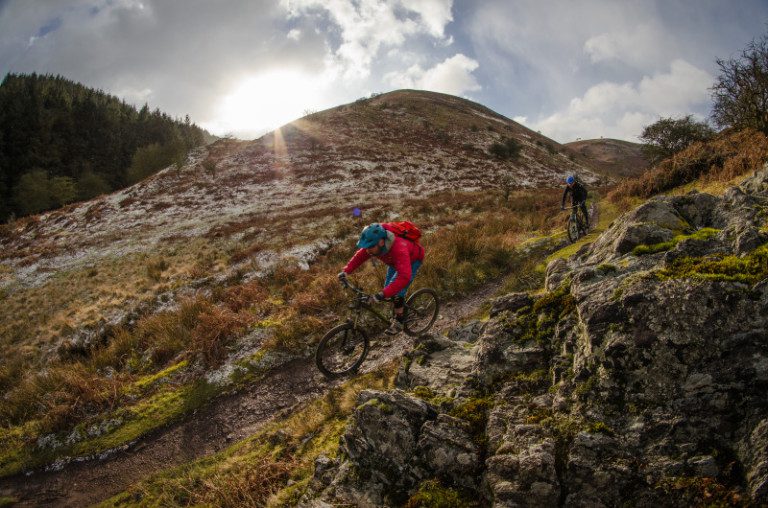XC bikes are focussed on being light weight and offering rapid climbing. If you want a bike for covering miles in a speedy manner then this guide will help you find what you're after.
XC bikes are designed with power efficiency and climbing performance at the forefront. Covering ground at speed and often covering considerable distances. They will still be capable at some technical terrain but the priorities lay elsewhere.

Hardtail or full suspension
Hardtails will be lighter than similarly priced full-suspension bikes. Lighter is always good when cycling but with mountain biking you need to factor in comfort and grip too.
If you’re looking at entry level or mid-price point bikes for XC riding then hardtails are usually the best option. The considerable weight saving over full suspension designs will be much more significant.
When looking at high end XC bikes then the weight saving becomes less significant and the efficiency, control and fatigue-reducing qualities of a full suspension bike become more important.
Suspension
XC bikes have 100mm (4in) or less of suspension travel. Having the ability to lock-out the suspension to prevent unwanted movement during climbing or extended periods of road riding can be useful for XC. More expensive bikes have suspension with adjustable damping for fine-tuning how you like it to behave or feel.
Frame material
Most XC bikes have aluminium frames. Some top end bikes are made from carbon. Both of these materials deliver high levels of stiffness. Stiffness is highly prized in XC as it makes for a quick handling bike with efficient pedalling power.
Aluminium can vary hugely depending on price point and frame design. The more expensive the aluminium frame the lighter it will be but without any sacrifice in stiffness.
Carbon is expensive. Bike designers can achieve things with carbon that they cannot achieve with any other frame material. Carbon bikes can be light, stiff, strong and comfortable. Carbon is the current wonder-material.
Wheel size
Bigger wheels are more popular than smaller wheels in XC. Bigger wheels carry speed and momentum better than smaller wheels.
With XC there is no requirement for lots of suspension travel so there isn’t any issue with finding room for 29in wheels under the rider like there can be when designing longer travel (120mm+) 29in wheel bikes.
Having said that, small riders aren’t suited to big wheels so if you’re below 5’ 5” you should look at 26in or 27.5in wheel XC bikes.
Geometry and componentry
XC bikes have geometry and componentry chosen with power efficiency and climbing performance at the forefront.
Steep head angles, long-ish stems, flat handlebars, short chain stays, fast-rolling tyres, lightweight brakes, firm feeling suspension, gear ranges based around high speeds.
Why spend more?
Bikes get lighter as the price tag increases. It’s a fact. Saving weight is worthwhile and desirable for any type of cycling.
More expensive bikes are usually stiffer, which is great for pedal power transfer during climbs.
Suspension units (forks and rear shocks) get more sophisticated damping circuitry and adjustability. You can get the suspension to behave how you want it to.
Drivetrain, brakes and finishing kit – wheels, bars, stem, seatpost, tyres etc – become lighter, stronger, more accurate, reliable and durable.

Pingback: Buyers Guide to Mountain Bikes | Merlin Cycles Blog